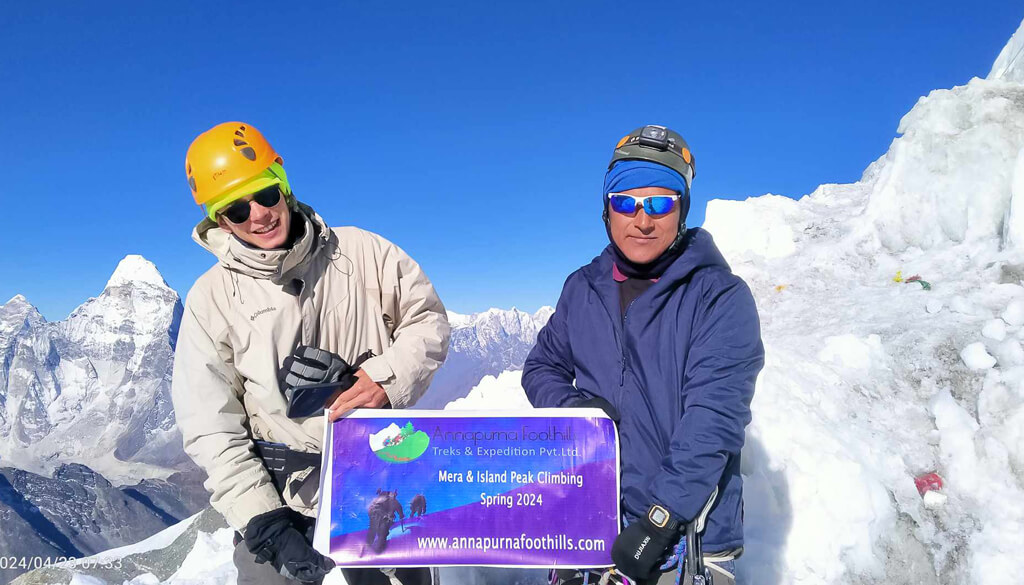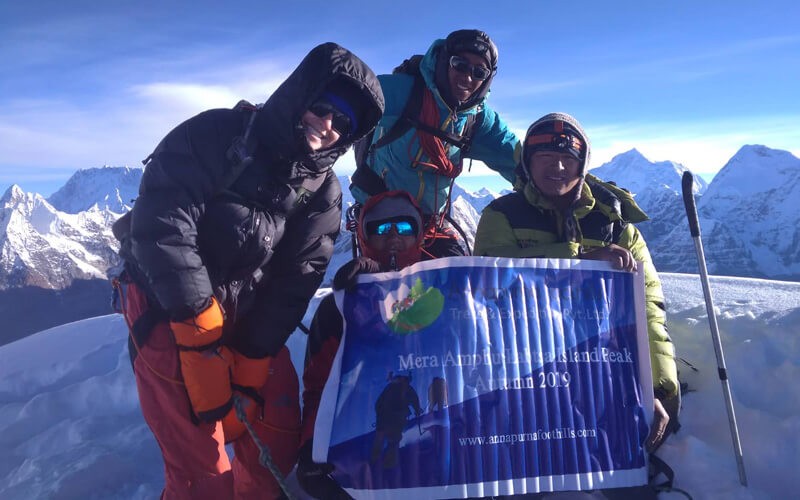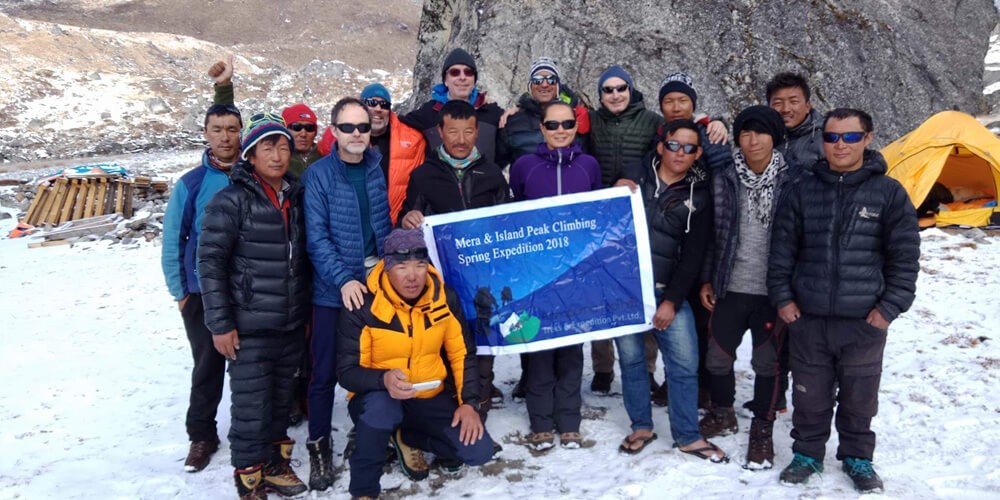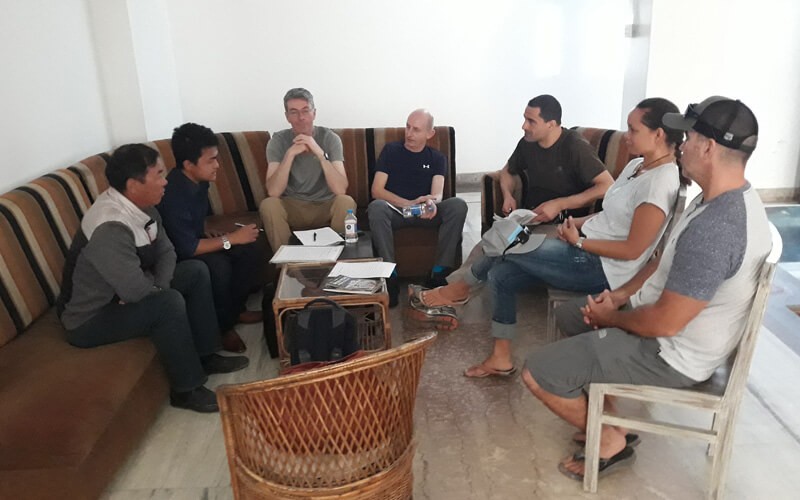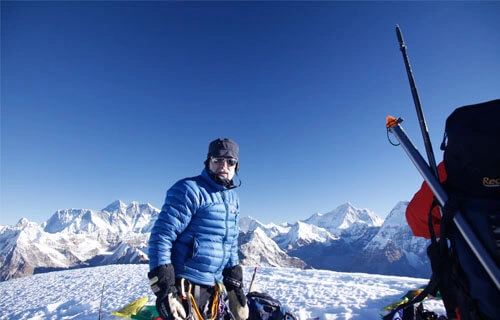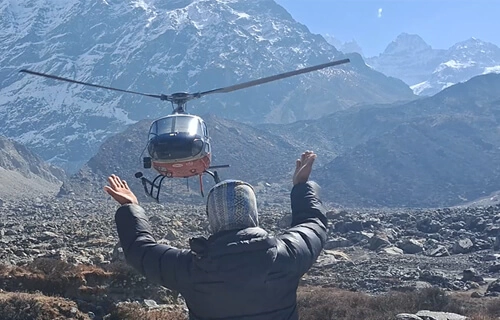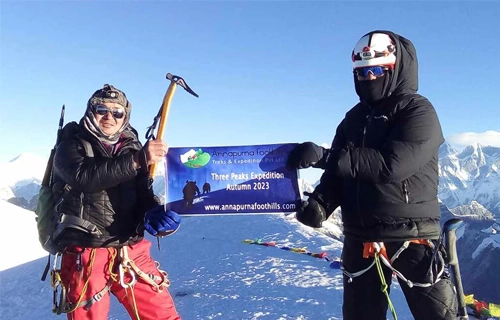About Mera and Island Peak Climbing
Mera and Island Peak Climbing with Amphu Labtsa Pass is the ultimate trekking and climbing challenge yet rewarding mountaineering experience that offers the chance to summit two of the most popular trekking peaks in Nepal, crossing a high mountain pass at an elevation of 5700 meters. This exceptional high-altitude adventure is packed with an amazing variety of mountains and wilderness valleys, forests and grasslands, lodges and camping: a complete Khumbu trekking and climbing experience for adventure enthusiasts.
Mera and Island Peak climbing via Amphu Labtsa Pass is a strenuous mountaineering expedition that requires good physical fitness and previous experience of high altitude trekking. The trip is graded Alpine PD, which means that it is a challenging climb that requires the use of ropes and crampons. This 25 days Himalayan expedition includes two incredible peaks over 6000 meters, one technically challenging pass, and seven consecutive nights at elevations over 5100 meters. However, the rewards of summiting these two 6000m peaks make this expedition an exceptional mountaineering experience.
Climbing Mera Peak (6476m / 21,247 ft.)
Mera Peak, at an elevation of 6476 meters above sea level, is an exceptional pick for first-time climbers in the Nepal Himalayas. Climbing Mera Peak allows you to explore the untouched beauty of the Everest region while challenging yourself physically and mentally. The climb is stimulating yet achievable, and the summit views are spectacular, taking in five of the highest mountains (above 8000m) in the world, including Mount Everest, Lhotse, Cho Oyu, Makalu, Kanchenjunga and other neighboring peaks. The climbing route, in general, is non-technical, but it does involve some altitude gain. Climbers must be physically fit and acclimatized to the high altitude.
Climbing Island Peak (6119m / 20,075 ft.)
At an elevation of 6189 meters above sea level, Island Peak or Imja Tse is a moderately challenging trekking peak in the Khumbu region of Nepal. It is popular for climbers who want to experience the thrill of high-altitude mountaineering without the technical difficulty of more challenging peaks. The summit of Island Peak offers panoramic views of the surrounding mountains, including Mount Everest, Nuptse, Lhotse, Ama Dablam, and many others. The climb to Island Peak is graded as 2B in difficulty, which requires skills and experience. However, it is still within the reach of the average fit person who is properly prepared. Climbing Island Peak is an unforgettable experience to stand on top of a mountain and see the world spread out before you.
Mera and Island Peak Climbing Route Overview
Our Mera and Island Peak Expedition starts with climbing the least technical but highest, Mera Peak first, followed by the rather tricky Amphu Labtsa Pass and then a moderately difficult Island Peak, with its exposed summit. Our Mera and Island Peak Climbing expedition begins with a scenic flight from Kathmandu to Lukla. The flight is short but spectacular as we fly over the snow-capped peaks of the Himalayas. After landing in Lukla, we descend to Paiya, where we spend our first night. This route avoids the steep climb to Zatrwa La Pass by making a loop to the south through a beautiful untraveled part of the country and joins the Kothe, allowing time for gradual acclimatization. We follow the Inkhu River up to the Mera Peak Base Camp, nestled at the foot of Mera’s north face. The route to the High Camp goes via Mera La. Only the last 30 or 40 meters to the summit require fixed ropes. From the summit, you get magnificent views of the world's highest mountains, including Mount Everest (8,848 meters), Mount Lhotse (8,516 meters), Mount Cho Oyu (8,201 meters), Mount Makalu (8,463 meters), and Mount Kanchenjunga (8,586 meters).
After descending from the summit of Mera Peak, the trail turns east at the Mera La and continues descending into the Upper Hongu Valley. The valley is dominated by the rock face of Chamlang to the east and the snow-capped peaks of Lhotse and Everest to the north. After following the valley for several hours, we reach the sacred Panch Pokhari Lakes (Five Divine Lakes). This is where we begin our ascent of the Amphu Labsta pass, one of the most challenging objectives of the expedition. The pass is located at an altitude of 5780 meters and is a succession of ice steps leading up to a rocky crest. A fixed line is required for the ascent. From the top of the pass, we abseil down 35 meters to reach fixed ropes for the next 300 meters of steep switchback descent on snow and rock.
After crossing the pass, we re-enter the Khumbu Valley, which feels more crowded after many days in the wilderness. We will set up base camp in the Imja Valley and prepare to summit Island Peak (6189 meters), which lies close to the imposing south face of Lhotse. We will hike towards Island Peak via the standard route, directly underneath the southwest face of Lhotse (the fourth-highest mountain in the world). Although lower in altitude than Mera Peak, Island Peak is slightly more challenging. The ascent begins with an easy scramble up to a rock ridge, followed by a glacier climb using fixed lines. The final section involves ascending a 45-degree snow slope to the exposed summit ridge. The view from Island Peak summit offers surreal panoramic views of Mount Lhotse, Nuptse, Makalu, Ama Dablam, and other neighboring snow giants. After following the Chhukung Valley, we join the Everest Base Camp trail at Dingboche, a Sherpa village that we pass through on our way back to Lukla.
Similar Trips
1. Three Peaks in Everest Region
Our Three Peaks in Everest Region combines three of the highest trekking peaks in Nepal: Mera Peak (6,476 m), Island Peak (6,189 m), and Lobuche East Peak (6,119 m).
Trip Cost (all inclusive): US$ 4500 per person more detailed
Returning to Lukla
After summiting Mera Peak and Island Peak, we descend back to Tengboche, Namche, and Lukla. The descent helps our bodies adjust gradually to the thicker air at lower altitudes, reducing the risk of altitude-related problems. Once we reach Lukla, our trip officially ends. We can celebrate our successful summit that evening in Lukla. The Mera and Island Peak Climbing via Amphu Labtsa Pass is an epic journey that will test your physical and mental limits. You will explore the pristine beauty of the Everest region and summit two of Nepal's most popular trekking peaks.
Returning to Lukla by Helicopter
A helicopter ride back to Lukla after your Mera and Island Peak climb is a great way to end your adventure. The scenic flight offers stunning views of the mountains and can save you a lot of time. Helicopter shuttle services are available from all significant Sherpa settlements, such as Chhukung, Dingboche, etc.
Best Time for Mera and Island Peak Climbing
The Himalayan region experiences distinct seasons with unique weather patterns, visibility, and challenges. It is important to be aware of the seasons before climbing the Two Peaks in the Everest region. The best time for the Mera and Island Peak Expedition is Autumn (September to November) and Spring (March to May). The weather is generally pleasant and stable during this time, with clear skies and low rainfall. This makes for ideal trekking conditions, as the trails are less muddy and slippery, and the views are clearer.
Trekking Peaks | Best Time to Climb |
Mera Peak (6476m) | September to November (Autumn) & March to May (Spring) |
Island Peak (6189m) | September to November (Autumn) & March to May (Spring) |
Permits for Mera and Island Peak Climbing
For undertaking Mera and Island Peak Climbing, climbers are required to obtain the following permits:
- NMA (Nepal Mountaineering Association) Permit
- Makalu Barun National Park Entry Permit
- Sagarmatha National Park Entry Permit
- Local Area Permit (Khumbu Rural Municipality Entrance permit)
Note: All these permits are included in the package cost.
Is Mera and Island Peak Climbing the right choice for you?
As the name implies, Mera and Island Peak climbing includes an ascent of two peaks over 6,000 meters and a traverse of Amphu Labtsa Pass at 5,700 meters. Having previous experience of high altitude treks is beneficial but not mandatory. You will need strong physical stamina as the trip is long and takes place in remote areas. The climb involves using peak climbing equipment, such as a flexible harness, crampons, mountaineering boots, and an ascender. Basic mountaineering skills are essential, but we will provide a climbing course at base camp before the summit attempt.
We also offer Three Peaks Climbing in Everest Region, which includes Mera Peak (6476m), Island Peak (6189m), and Lobuche Peak (6119m), respectively. This is a more challenging climb, but it is also a more rewarding experience. Trip Cost (all inclusive): US$ 4500 per person
Preparation / Training for Mera and Island Peak Climbing
Climbing Mera Peak and Island Peak in a single trip in the Everest region is a thrilling and inspiring challenge. The peaks, Mera Peak and Island Peak, are all over 6,000 meters high and require a high level of physical and mental preparation to maximize the chances of successful summit.
Physical Preparation
The most crucial physical preparation for climbing the Mera and Island Peak Climbing is building cardiovascular fitness and strength. It would be best to focus on exercises that will help you develop balance, coordination, and agility. It is also important to acclimatize to high altitudes before you attempt to climb the peaks. This can be done by hiking in the mountains at lower altitudes.
Mental Preparation
Mental preparation is as necessary as physical preparation for climbing the Three Peaks. You need to be mentally strong and determined to succeed. You should also be prepared for the challenges of high-altitude climbing, such as altitude sickness and fatigue.
Achieving a Successful Ascent
You can achieve a successful ascent of these two challenging peaks with appropriate physical and mental preparation. However, it is important to remember that climbing these peaks is dangerous. It is essential to climb with a qualified guide and to follow all safety procedures.
Book Your Spot Today
Please get in touch with us today to book your spot on our Mera and Island Peak Climbing. We would be happy to answer any questions and help you plan your trip.
Experience an Adventure of a Lifetime
Climbing Mera and Island in the Everest Region is an adventure of a lifetime. It is a challenging but rewarding experience that will test your physical and mental limits. You will also have the opportunity to experience the beauty and wonder of the Himalayas.
Bookings Open for 2025 and 2026.
We are happy to announce that bookings for our 2025 and 2026 Treks to the Two splendid Trekking Peaks in the Everest Region are now open.
Guaranteed Departures
We offer guaranteed departures for our Mera and Island Peak Climbing. This means that your trip will depart regardless of the number of participants. Upon your request, we can customize our Mera and Island Peak Climbing Trip to fit your interests and needs. We can adjust the itinerary, the level of difficulty, and the number of days to suit your preferences. For details, get in touch.
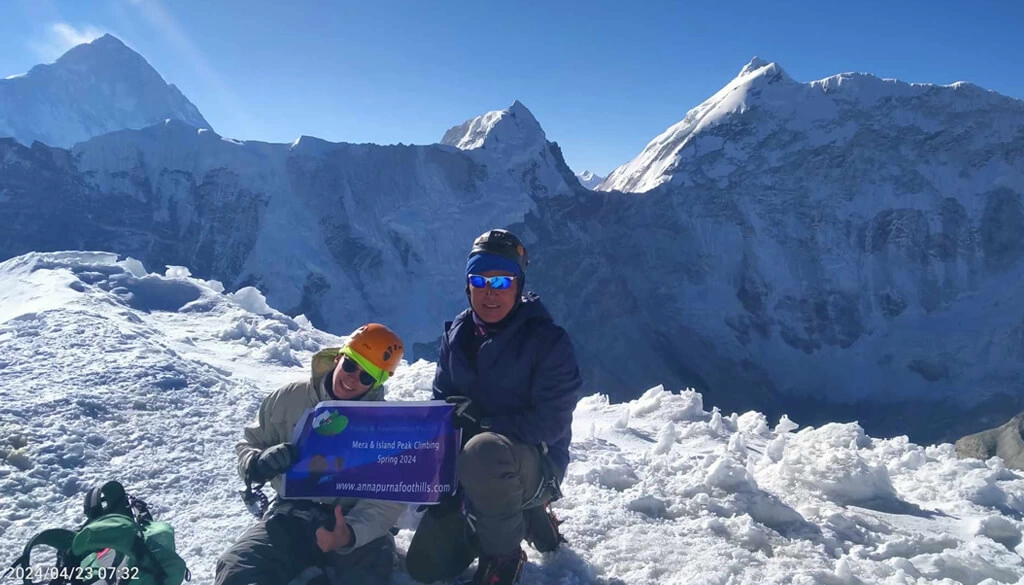
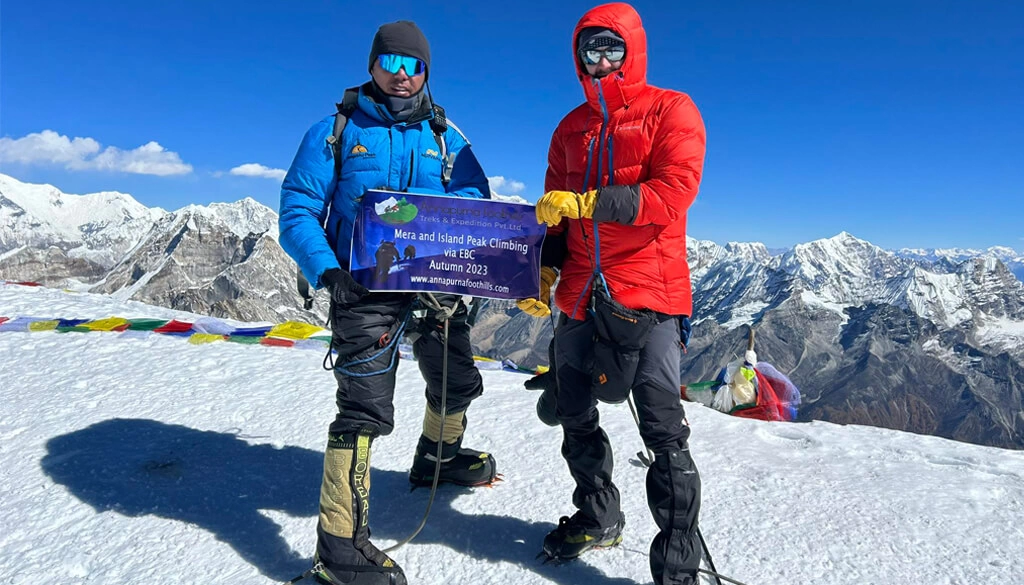
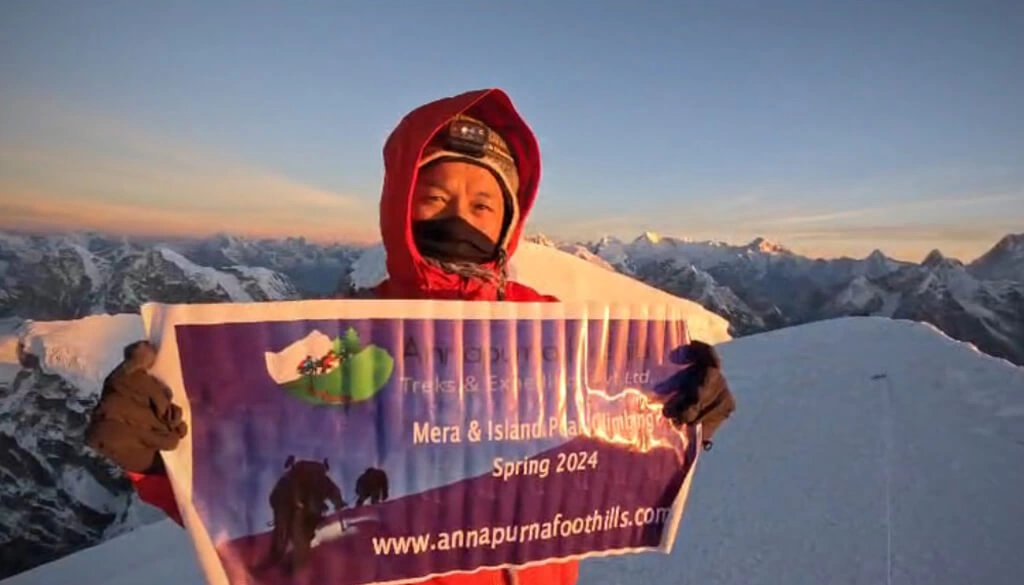
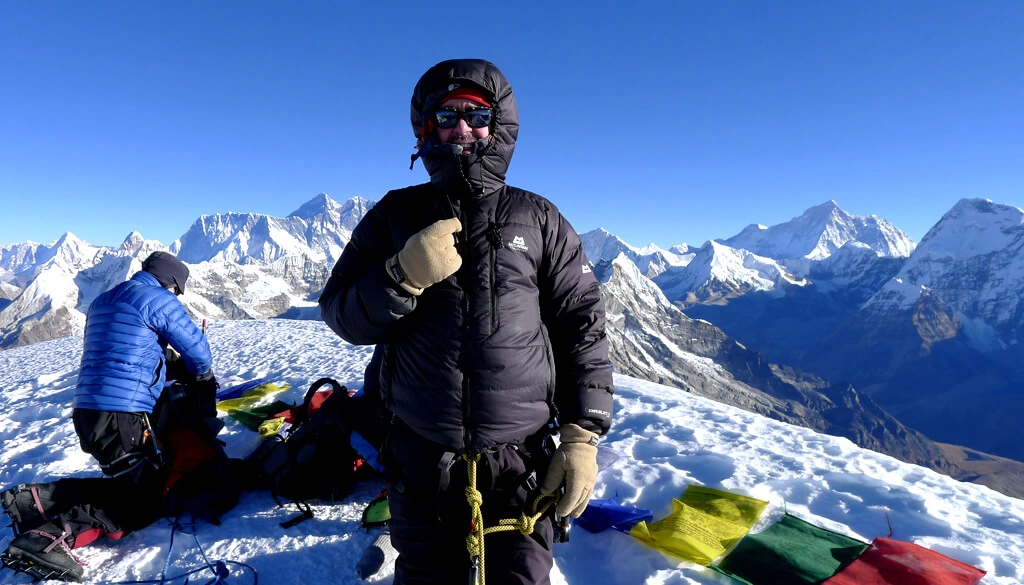
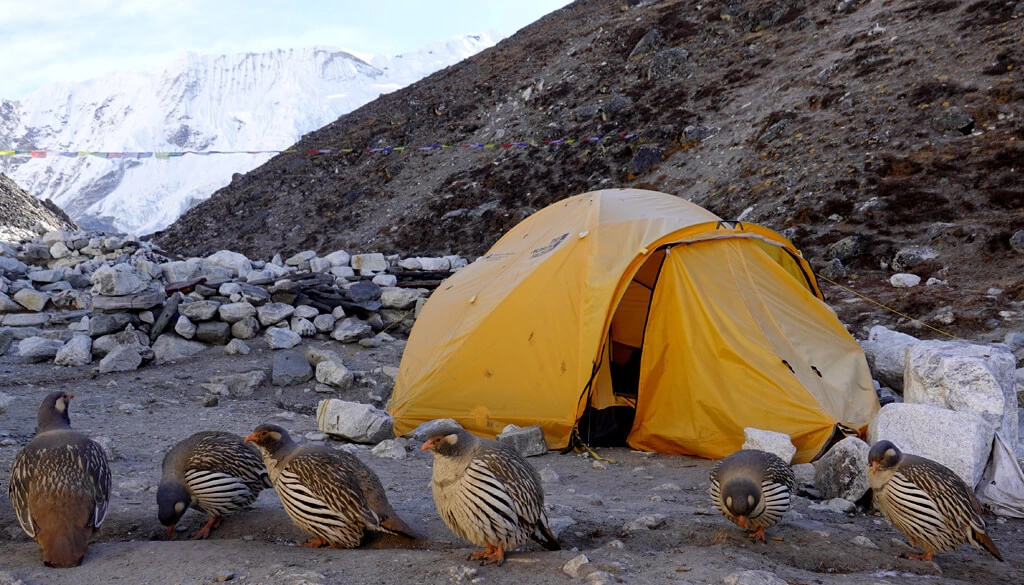
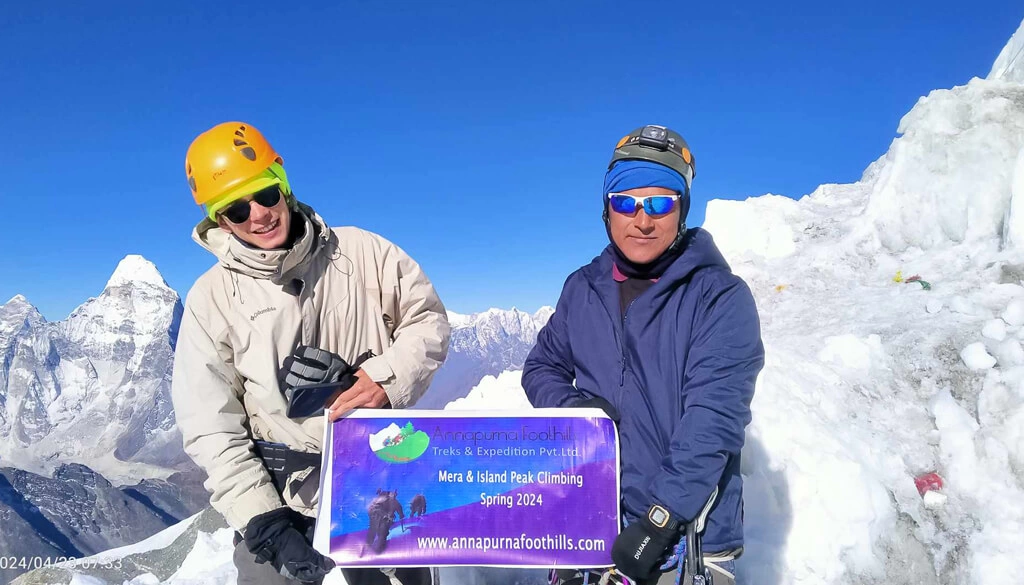
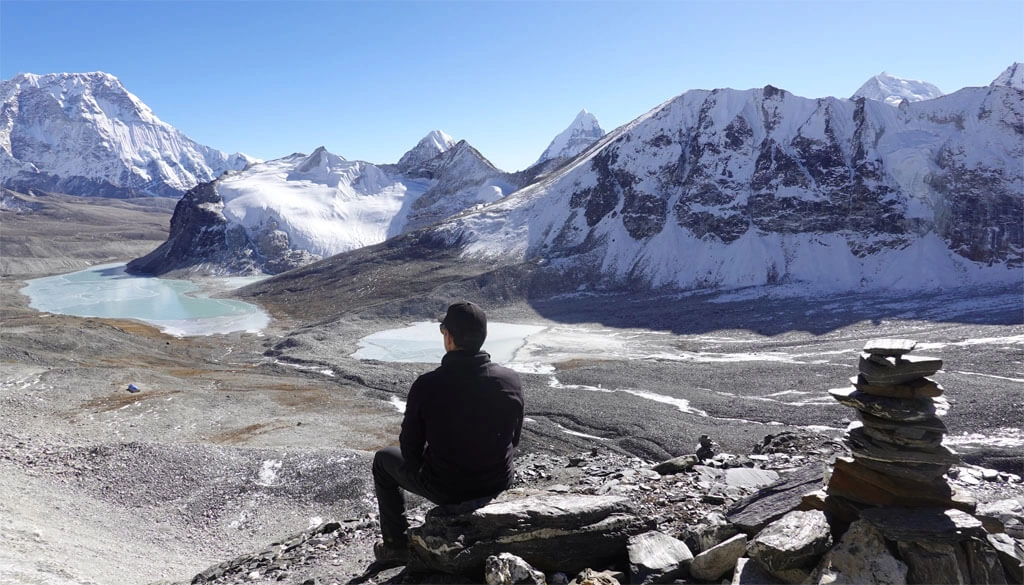
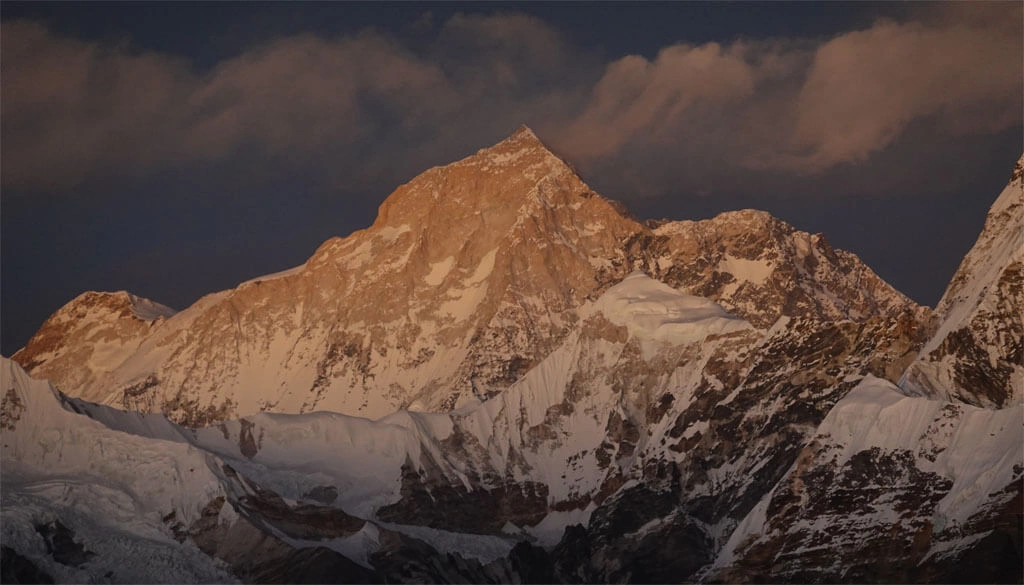
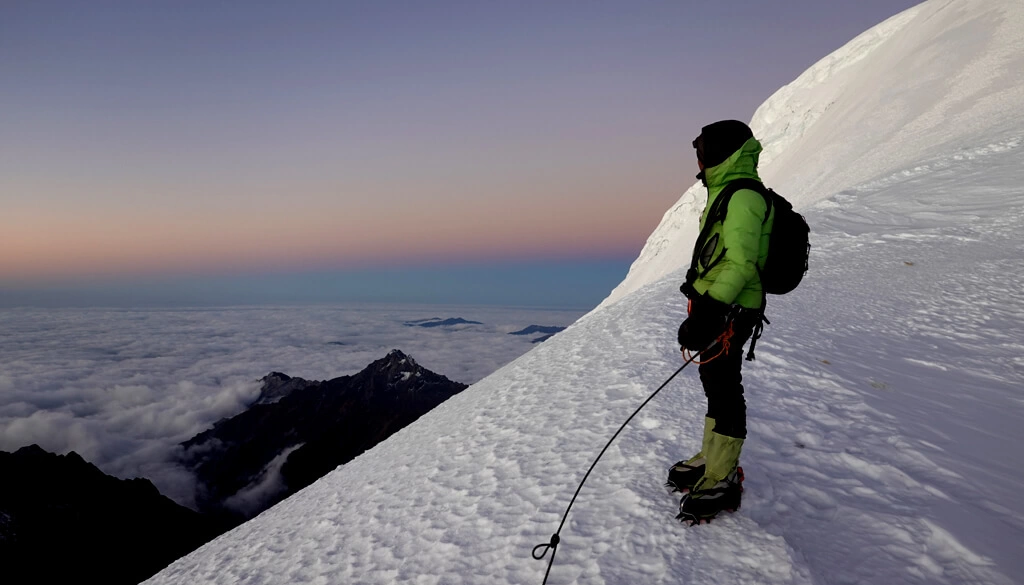
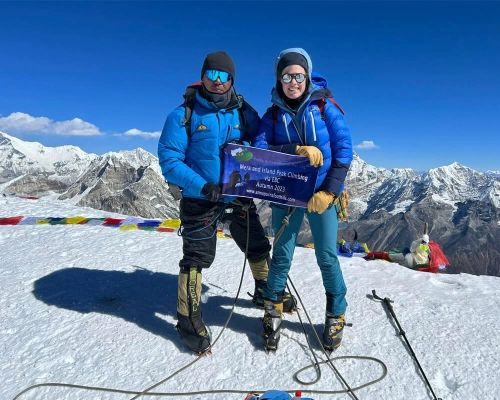
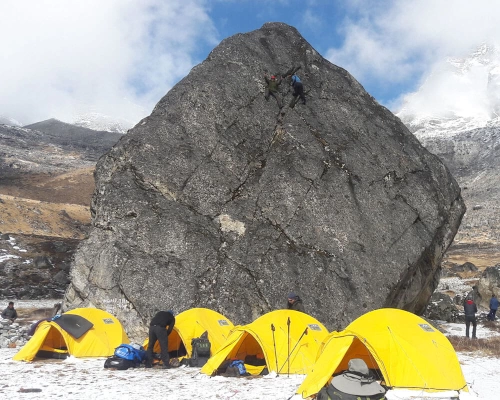
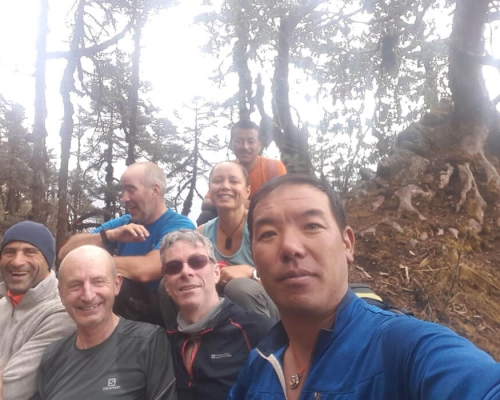
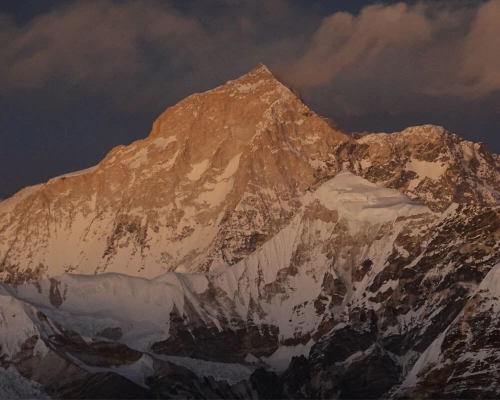
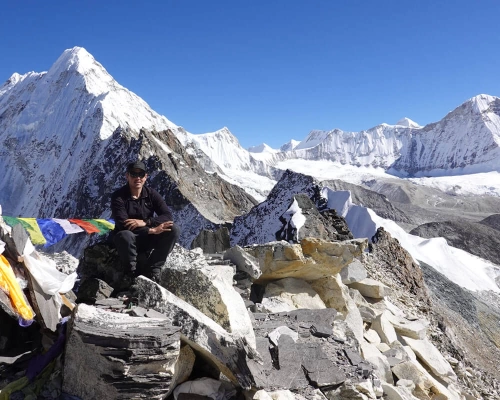
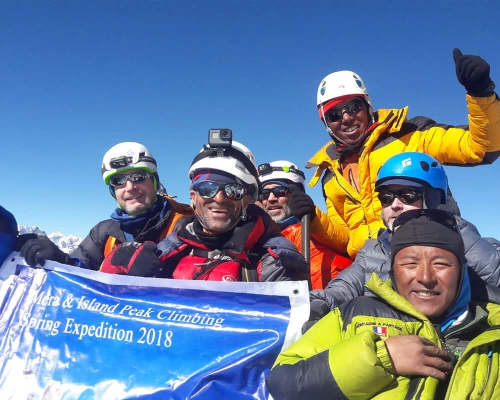
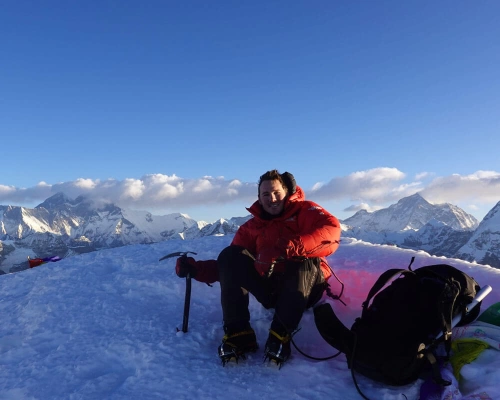
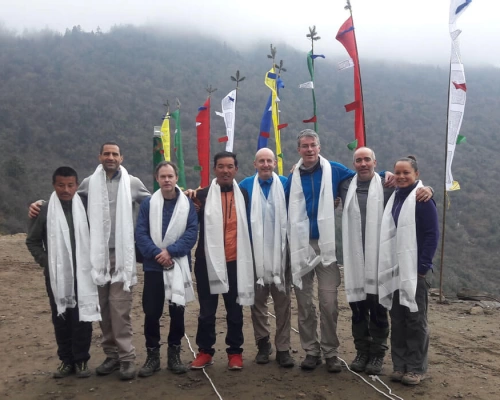
.jpg)
